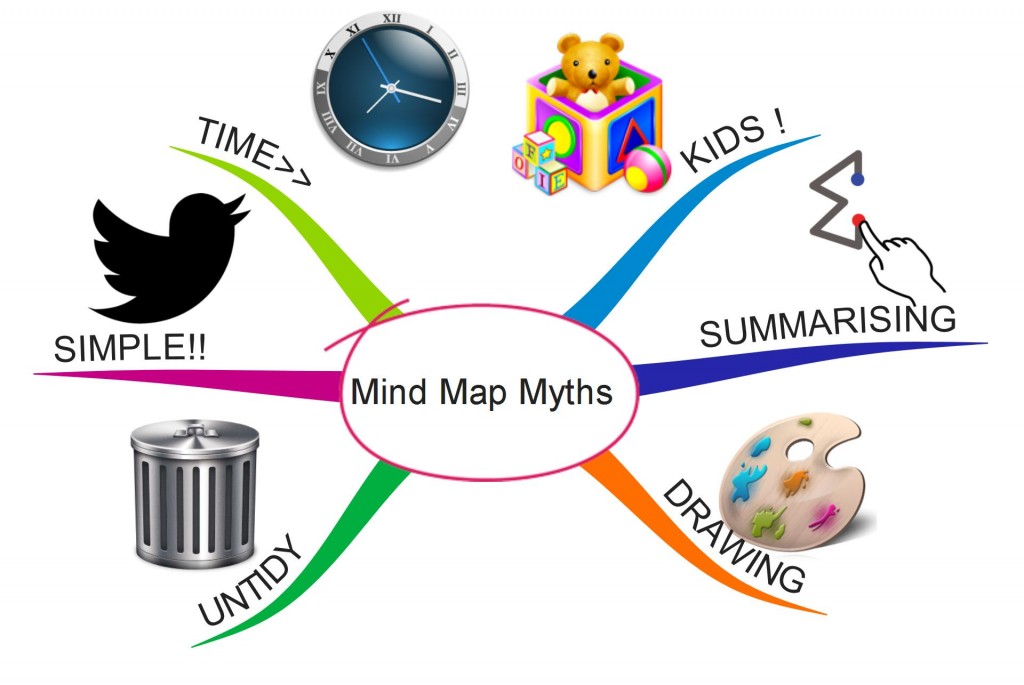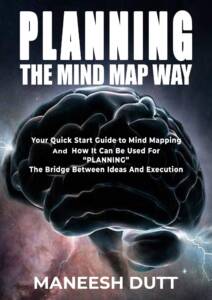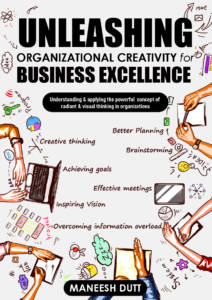Interacting with a number of people during my Mind Map workshops, I realized that there are a set of at least 6 myths that many have before understanding fully the potential of Mind Maps. Check if any of these myths is also stopping you from adopting Mind Maps in a bigger way:
Myth 1: Mind Mapping is for Kids only…
Yes, it is true that a number of schools and colleges across the globe are adopting Mind Maps. There are, however, an equal number (or more) organizations adopting Mind Maps for achieving organizational excellence. Given that a Mind Map involves rich use of color and images has probably led some of us to believe that this is a kid’s “toy” rather than a serious tool to clarify our thought process. Visit the site – www.biggerplate.com – where you will find encouragement from the numerous Mind Maps relating to business, problem solving, management, leadership etc.
Myth 2: Mind Maps are a good tool to summarize information but…
Yes, Mind Maps are an excellent tool to summarize a large amount of information on a single page but that is just the tip of the iceberg. Mind Maps help us both in “learning” and “creating”. While “learning” there may be a stronger focus on assimilating information, during “creating”, however, you need to generate your own original and unique ideas. And a Mind Map has proven to be the perfect tool for generating ideas. See how Mind Maps can be used in multiple ways across a project life cycle from start to finish in my book “Mind Maps for Effective Project Management”.
Myth 3: Mind Map involves drawing and I am no artist…
A Mind Map is an image or a picture but you do not have to be an artist to make a Mind Map. At the same time it is also a myth that we cannot draw. As kids we were all great artists but somewhere along the way life taught us otherwise. Simple images, codes and symbols are required on your Mind Map to make it engaging enough for your brain, all of which YOU can easily do!
Myth 4: Mind Maps are untidy…
The first Mind Map that you make “may” appear an untidy artwork. Do not, however, judge a Mind Map by its appearance but by the insights that it is able to deliver despite a perceived chaotic appearance. Continue to Mind Map and you will be surprised with the increased clarity emerging in your Mind Maps. Even then, if you are not satisfied with your hand drawn Mind Maps, you can always progress to Mind Mapping software. The one that I use for all my Mind Mapping needs is the iMindMap, which can be downloaded from https://imindmap.com/software/.
Myth 5: Mind Maps are too simple to be used for complex stuff like mine..
On the face of it, a Mind Map may look like a very simple tool but do not let this simplicity undermine its vast potential. The Google page is simplicity personified but does fence its powerful search abilities. As shared by Mr. Tony Buzan, inventor of Mind Maps, there are certain steps to be followed for making a Mind Map, , which can help you derive the maximum benefit from this powerful technique. These can be read at https://imindmap.com/how-to-mind-map/.
Myth 6: Mind Maps consume too much time…
A Mind Map helps you generate a larger number of ideas than what you would otherwise by engaging in the routine linear thought process. A Mind Map encourages radiant and unbound thinking, which is well worth the time invested in making it. And with practice, you will be able to make Mind Maps much faster.
Still not convinced about the power of Mind Mapping? Invite us for a one hour lecture or a workshop for your organisation by dropping us a message by clicking here.



